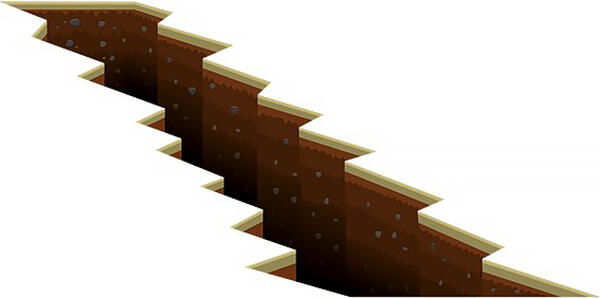
The research group of graduate student Da Pan and Associate Professor Hiroyuki Miura, of the Graduate School of Advanced Science and Engineering, Hiroshima University, Professor Tatsuo Kanno and Assistant Professor Michiko Shigefuji of the Graduate School of Human-Environment Studies, Kyushu University, and Chugoku Electric Power Co., Inc. have developed a technique that uses a deep neural network and ground microtremor data to automatically estimate ground amplification characteristics with high accuracy during earthquakes. Associate Professor Miura said that "The method can be used to evaluate seismic hazards and building safety because it allows us to estimate the shaking susceptibility at a particular location in the event of an earthquake without costly borehole investigations or long-term seismic observations." The paper was published in the Bulletin of the Seismological Society of America (BSSA).
Until now, in order to predict the intensity of ground shaking during an earthquake it has been necessary to take into account the characteristics of the epicenter of the expected earthquake, the effects of the seismic wave propagation path, and the effects of amplification of seismic waves by the ground. In particular, ground amplification characteristics are important information for considering the impact of earthquakes on buildings and infrastructure, since they have large local variations and have a significant impact on the way the ground shakes due to earthquakes. However, borehole surveys and long-term seismic observation data are required to determine ground amplification characteristics, and because of this it has been difficult to determine the ground amplification characteristics at any given point because of the large amount of time and labor that are required.
On the other hand, the ground ordinarily undergoes microtremors with very small amplitudes (about the thickness of a hair). It was also known from past studies that the spectral amplitude ratio (MHVR) of horizontal to vertical ground motion obtained from microtremor data has a shape that is similar to that of ground amplification characteristics. Therefore, the research group wondered if it would be possible to estimate ground amplification characteristics by using microtremors that can be measured anytime and anywhere.
In this research, microtremor data was obtained from approx. 80 stations in the strong-motion seismograph network of the National Research Institute for Earth Science and Disaster Resilience (NIED) in Japan's Chugoku region. The ground amplification characteristics obtained from spectral inversion based on seismic observation data that had been observed by the NIED over many years were defined as correct, and the MHVR obtained from microtremors at the same locations were used as input data to train a deep neural network. In learning via the neural network, methods that could reproduce the complex shapes of the ground amplification characteristics (e.g., unevenness) were considered, and then, so that a general-purpose model would be created, the learning process was repeated while using the learning data after it had been manipulated in a variety of ways.
It was found that the use of deep neural networks makes it possible to assemble complex relational equations that are difficult to reproduce using conventional statistical methods, and to estimate ground amplification characteristics from MHVR with high accuracy. Furthermore, it was clarified that the method can be applied to sites outside of the Chugoku region.
However, according to Associate Professor Miura, "The ground structure differs in metropolitan areas that consist of large plains and basins, such as Tokyo and Osaka, so it will be necessary to further train the method according to the characteristics of these areas." With this new technology there is a dramatic reduction in the amount of labor required for evaluating ground amplification characteristics because shaking susceptibility during earthquakes can be automatically determined, without the need for extensive surveys or observations, simply by measuring the shaking at a single point. As such, this makes it possible to quickly and easily determine the ground amplification characteristics of a large number of points, and it is expected that it will be useful for more accurate prediction of strong ground shaking.
Professor Kanno of Kyushu University said that "We expect local governments to, for example, observe microtremors on a 1-kilometer mesh and create more detailed seismic motion prediction maps."
This article has been translated by JST with permission from The Science News Ltd.(https://sci-news.co.jp/). Unauthorized reproduction of the article and photographs is prohibited.




